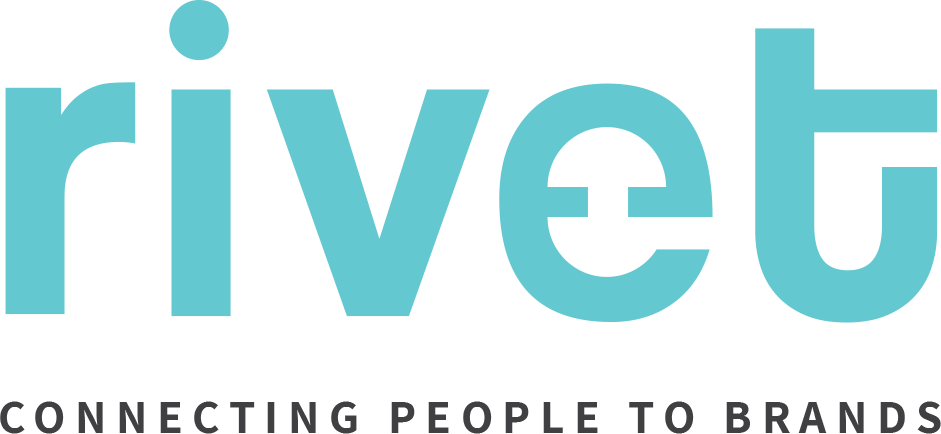The world has always been filled with diversity, but as society becomes more accepting of open conversations surrounding identity, media representation of these communities must grow with it. At Rivet, we recognize the importance of our work as a reflection of consumers’ various cultures, races, religions, gender identities, and ethnicities, because all of these identities factor into each individual‘s perspective. Placing emphasis on diversity within any campaign presents both opportunities and challenges for businesses and marketers: Companies that embrace multiculturalism and diversity can tap into new markets and gain a competitive advantage. On the other hand, failing to understand and represent diverse communities in an informed, respectful way can lead to missed opportunities, misunderstandings, and even cultural insensitivity. For example, No one in this industry can forget the infamous Kendall Jenner Pepsi ad, where Jenner, a privileged white woman, essentially cured racism and police brutality with a single Pepsi can.
All this to say, diversity, equity, and inclusion aren’t just boxes we can check when working in our industry. They are principles that encourage the fruition of new ideas, perspectives, and education of everyone involved.
Multicultural representation in marketing and communications is vital for several reasons. It helps to create an inclusive environment that welcomes people from different backgrounds (Note: Inclusion is the keyword here!). When we talk about inclusion, we’re talking about everything that has to do with us as a workforce, as employees, and how we experience a work environment. It’s about the degree to which any organization (not just advertising agencies like us) can embrace all employees and enable them to make meaningful contributions. If companies can foster inclusive environments where everyone feels safe, supported, and welcome to contribute, the campaigns produced by these companies will better reflect a wider variety of perspectives. Inclusive marketing strategies that embrace multiculturalism send a powerful message that a brand values diversity, respects differences, and is committed to serving all its customers, regardless of their race, culture, or ethnicity.
Inclusion is what unlocks the POTENTIAL in a diverse workforce, and that potential has the capacity to resonate with consumers on a deeper, more personal level than ever before.
When we talk about incorporating DE&I practices into our campaigns, the focus should always be on our consumers: Who are they? How can we make them feel seen? By understanding the cultural nuances and preferences of different communities, businesses can tailor their messaging and products to appeal to a broader range of consumers.
 Let’s take a look at Fenty, a beauty line developed by Rihanna that served as a milestone in the beauty industry regarding representation and diversity. Prior to brands like Fenty, the beauty industry was notorious for lacking a wide range of shades for BIPOC communities, while having no shortage of lighter shades. When Fenty Beauty came on the scene with a whopping 50 shades of foundations and concealers, makeup users of all communities felt seen, heard, and respected. This eventually led to the coining of the term, “The Fenty Effect”, describing the phenomenon of brands suddenly becoming more inclusive and diverse in their representation as a result of the success of Fenty Beauty. Notable makeup brands like Covergirl, Dior, Too Faced, and Maybelline went on to expand their shade ranges within the first year of Fenty’s launch. This is just one example of a brand that was able to intertwine its own identity with that of its consumers in a way that was successful for not just the consumers themselves, but the industry as a whole.
Let’s take a look at Fenty, a beauty line developed by Rihanna that served as a milestone in the beauty industry regarding representation and diversity. Prior to brands like Fenty, the beauty industry was notorious for lacking a wide range of shades for BIPOC communities, while having no shortage of lighter shades. When Fenty Beauty came on the scene with a whopping 50 shades of foundations and concealers, makeup users of all communities felt seen, heard, and respected. This eventually led to the coining of the term, “The Fenty Effect”, describing the phenomenon of brands suddenly becoming more inclusive and diverse in their representation as a result of the success of Fenty Beauty. Notable makeup brands like Covergirl, Dior, Too Faced, and Maybelline went on to expand their shade ranges within the first year of Fenty’s launch. This is just one example of a brand that was able to intertwine its own identity with that of its consumers in a way that was successful for not just the consumers themselves, but the industry as a whole.
Multicultural representation within our industry is not something to be taken lightly: it requires much research, collaboration, and most importantly, education to be successful. Brands cannot simply attempt to check the “inclusive” box just for the sake of doing so. They must have intentionality when it comes to their practices in order to avoid making assumptions or stereotypes about people from different backgrounds. Multicultural representation in the media shouldn’t be surface level. It should be deeply intertwined with the brand messaging and the strategy behind the campaign it aims to uplift.
In today’s globalized world, it is so essential to be aware of cultural differences, especially in marketing, because strategies that are culturally insensitive can lead to negative backlash for a brand and permanent brand damage. The last thing that we want to do (not just as a brand, but as people) is to diminish the stories and voices of the people we aim to connect with. Cultural insensitivity can lead to backlash, damage to a brand’s reputation, and even lead legal action. Marketers can avoid these pitfalls and build positive relationships with customers from all backgrounds with the proper time, effort, and education.
It’s up to the next generation of communicators to utilize these practices as a means of promoting social justice and equity. Growing up, the media plays such a large part in communicating to us, as viewers, what our worth is to the world around us. Now, as the ones leading the charge on media representations, we must challenge stereotypes and utilize our messaging strategies to promote greater understanding and acceptance of people. We should be telling stories that create a more just and equitable society, one where all people are valued and respected for who they are.
 When not crafting social media brilliance as Rivet’s social media intern, Yuliana Garcia-Portilla is a senior advertising major at the University of Florida where she is pursuing a combined-degree Master’s in mass communication with a concentration in social media. She is an account supervisor and head media supervisor at The Agency at UF and an advertising sales representative at The Independent Florida Alligator.
When not crafting social media brilliance as Rivet’s social media intern, Yuliana Garcia-Portilla is a senior advertising major at the University of Florida where she is pursuing a combined-degree Master’s in mass communication with a concentration in social media. She is an account supervisor and head media supervisor at The Agency at UF and an advertising sales representative at The Independent Florida Alligator.

